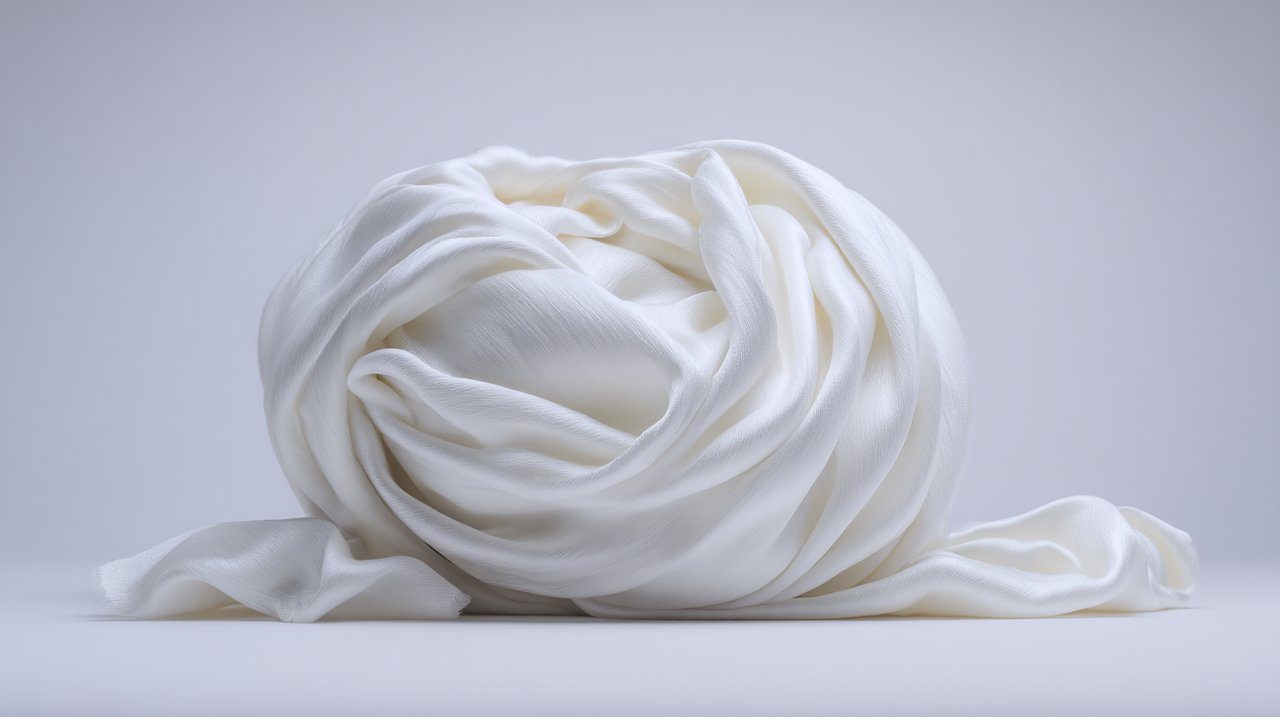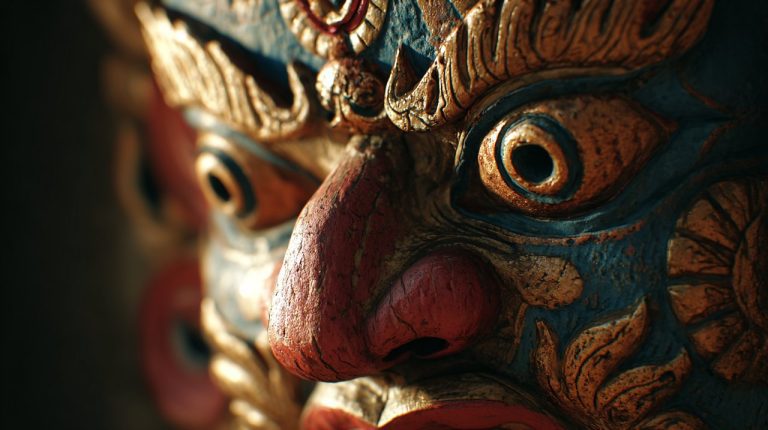Khata Meaning & Significance: The Sacred Scarf of Tibetan Blessings
The Khata: A Sacred Symbol of Tibetan Culture
Imagine a simple silken scarf, yet one that carries the weight of centuries, the depth of unspoken prayers, and the warmth of heartfelt connection. In Tibetan culture, this is the khata—far more than mere fabric, it is a profound symbol, an intricate language of reverence, respect, and spiritual exchange woven seamlessly into daily life and ancient Buddhist practices.
This exploration delves into the khata’s multifaceted significance, moving beyond its physical form to uncover its historical resonance, its vibrant spectrum of meanings, and its pervasive use in both solemn rituals and cherished everyday interactions. Understanding the khata offers a unique, intimate glimpse into the very heart of Tibetan traditions and the enduring bonds that tie its people together.
Khata: Form and Fundamental Symbolism
The khata, at its core, is a long, slender strip of fine silk or cotton, most frequently presented in a pristine white. This universal choice of white powerfully symbolizes purity, sincerity, and auspiciousness. It is not merely a color; it embodies the unblemished heart and pure intentions of the giver, instantly setting a tone of profound respect and goodwill for the exchange. In its simplicity, the white khata bridges the tangible and the spiritual, serving as a material representation of an unadulterated state of being.

While white remains the most prevalent, khatas also appear in a spectrum of other colors, each imbued with distinct symbolic meanings:
- Blue: Represents the vastness of the sky and the universe, symbolizing purity, healing, and the boundless nature of the mind.
- Green: Signifies the vibrancy of nature, dynamic vitality, and flourishing prosperity.
- Red: Denotes powerful protection, active compassion, and the fiery energy of transformation.
- Yellow/Gold: Symbolizes the grounding stability of the earth, deep-rootedness, and the profound wisdom inherent in the Buddha’s teachings.
These five elemental colors, often woven together to form rainbow khatas, directly correlate with the Five Dhyani Buddhas and the fundamental elements within Tibetan Buddhism. Beyond color, the very length and gracefully flowing nature of the khata itself are symbolic. They represent continuity, an endless stream of blessings, and the enduring, unbreakable bond that can be forged between individuals—a silent promise of ongoing connection and well-wishes.
Intention and Symbolic Exchange
The true profundity of the khata transcends its material form; its significance is rooted entirely in the sincere intention that accompanies its offering. This gesture serves as a powerful, non-verbal communication—a silent declaration of respect, honor, and heartfelt good wishes. When presented, the khata becomes a tangible vessel for prayers, blessings, and deep aspirations, forging an immediate spiritual connection between the giver and the receiver.
This unassuming yet remarkably potent act facilitates a profound energetic exchange. It eloquently demonstrates how deep interpersonal connections are not solely built on spoken words, but are powerfully forged and affirmed through meaningful, mindful actions. The khata, in essence, transforms into a tangible conduit, allowing the most intangible and cherished sentiments to flow freely between hearts.
Khata’s Role in Tibetan Cultural Practices
Beyond its inherent symbolism, the khata actively shapes and defines the rich tapestry of Tibetan cultural practices. From formal ceremonies to intimate personal exchanges, its presence underscores fundamental values of respect, generosity, and community, serving as a consistent thread throughout a lifetime.
Giving and Receiving: A Gesture of Respect and Generosity
The exchange of a khata is a deeply meaningful act, embodying a profound generosity from the giver and a reciprocal humility from the receiver. It is a dance of respect, where each movement carries significant weight. The customary protocol for offering a khata typically involves:
- Holding the scarf with both hands, often elevated to chest height, signifying reverence.
- Bowing slightly as it is presented, a gesture of profound respect.
- Gently draping it around the recipient’s neck or placing it respectfully into their hands, ensuring the scarf touches the person directly.
This beautifully ritualized exchange is a powerful, non-verbal language for conveying profound respect, heartfelt gratitude, or wishes for abundant good fortune. The recipient, in turn, accepts the offering with grace and dignity, acknowledging the sacred bond being affirmed and reciprocating the deep respect shown.
Khata in Life’s Milestones: Celebrations and Farewells
The khata gracefully accompanies Tibetans through the entire spectrum of significant life events, from jubilant celebrations to solemn farewells. Its ubiquitous presence marks critical transitions, serving as a tangible symbol of blessings, well-wishes, or profound condolences. Key instances where the khata plays an indispensable role include:
- Celebrations: Offered at births, weddings, graduations, and New Year (Losar) festivities, symbolizing new beginnings, abundant good fortune, and auspicious blessings for the future.
- Farewells: Presented at funerals to offer solace and comfort to the bereaved, and to express heartfelt prayers for the peaceful journey of the departed soul.
- Arrivals/Departures: Used to warmly welcome esteemed guests upon their arrival or to bid a respectful farewell to travelers, signifying honor, good wishes, and a hope for safe passage.
This pervasive integration into life’s most pivotal moments powerfully highlights the khata’s integral role in marking transitions with dignity, spiritual grace, and deep communal support. It truly serves as a constant, unifying thread in the rich tapestry of Tibetan social and spiritual life, binding generations and experiences.
Khata in Spiritual and Daily Practice
The khata’s influence extends far beyond formal ceremonies, deeply permeating both the sacred spiritual landscape and the nuances of everyday Tibetan life. It acts as a bridge between the mundane and the divine, fostering connection in every interaction.
Ritualistic Use: Offerings and Sacred Items
Within the intricate tapestry of Tibetan Buddhist rituals, the khata holds immense importance as a sacred offering. It is respectfully and mindfully presented to:
- Sacred Images: Adorning statues of Buddhas and Bodhisattvas, thangkas, and altars, symbolizing profound reverence and devotion.
- Lamas and Esteemed Teachers: As a gesture of deep devotion, profound respect, and heartfelt gratitude for their invaluable teachings and spiritual guidance.
- Holy Sites: Such as revered stupas, ancient monasteries, and pilgrimage destinations, honoring the sanctity of these spiritual loci.
This act of offering signifies pure devotion, profound respect, and the aspiration for spiritual merit. It frequently accompanies other sacred items like a string of Tibetan mala or prayer beads, enhancing the spiritual weight of the offering. The khata, in these contexts, transforms encounters into a truly sacred exchange, powerfully reinforcing spiritual connection and pure intent.

Everyday Applications and Social Etiquette
Beyond its formal ritualistic use, the khata is profoundly woven into the very fabric of everyday Tibetan social interactions. Its remarkable versatility makes it a common, cherished gesture in a myriad of informal settings, reflecting the innate courtesy and warmth of the culture:
- Greetings and Farewells: Friends exchange khatas upon meeting after a long absence, a warm embrace of renewed connection, and they are frequently presented when bidding farewell, signifying good wishes for the journey ahead.
- Welcome and Honor: Esteemed guests, whether strangers or friends, receive khatas as a sincere sign of warm welcome, profound respect, and hospitality.
- Requests and Acknowledgments: Offered when respectfully making a request to someone of higher status, or as a heartfelt sign of profound gratitude for a favor, a blessing, or a teaching received.
This widespread integration into daily life powerfully underscores the khata’s fundamental role as a universal symbol of respect, sincerity, and heartfelt connection within Tibetan society. It beautifully transcends the boundaries of formal religious practice, embodying a constant thread of mutual regard in every interaction.
Beyond Symbolism: The Khata’s Enduring Message
While its symbolic weight is undeniable, the khata’s true power lies in the enduring messages it imparts, offering profound insights into human connection, intentionality, and the very essence of giving. It invites us to consider deeper truths.
Building Human Bonds: A Symbol of Connection
Through its deceptively simple yet profoundly meaningful act of exchange, the khata serves as an extraordinarily powerful instrument for strengthening human connections. It eloquently emphasizes that true, resilient bonds are forged not merely through verbal communication, but through shared respect, deep empathy, and a profound, often unspoken, understanding. This non-verbal affirmation of connection, steeped in centuries of tradition, is particularly potent in a world often dominated by words.
Much like the intricate designs of Tibetan jewelry or the ancient, mysterious patterns of Dzi beads convey layers of esoteric meaning, the khata communicates the most profound sentiments without uttering a single word. It offers a vital lesson: the most enduring and cherished relationships are frequently those built upon a foundation of felt understanding and mutual regard, rather than grand, explicit declarations. Could this ancient practice hold a key to more authentic human interaction in our modern age?
Cultivating Intentional Giving
The profound practice of offering and receiving a khata inherently encourages a more mindful and deliberate approach to all human interactions. It is an invitation for individuals to engage not just with their hands, but with a pure heart and genuine intention, thereby transforming what might seem like a simple exchange into a deeply enriching and spiritually resonant experience for both the giver and the receiver.
The khata reminds us that generosity isn’t merely about what we give, but the spirit in which we give it. It is a quiet reflection of the enduring generosity found in nature itself.
In conclusion, the khata stands as a vibrant, living testament to the profound significance of non-verbal communication and heartfelt intention within Tibetan culture. Its enduring presence, stretching back centuries, powerfully underscores the deep-seated belief that the most profound and lasting connections are often expressed not through grand pronouncements, but through simple, meaningful gestures—gestures that truly enrich lives and foster a profound, shared understanding. It serves as a timeless reminder that spiritual depth is often found in the simplest, most intentional acts.
To truly grasp the boundless depth of Tibetan heritage, we are invited to delve further into other unique cultural expressions that similarly embody principles of pure intention, profound spiritual significance, and robust community connection—each a thread in the rich tapestry of a living tradition.
💡 Frequently Asked Questions
A khata is a simple silken scarf, typically white, that serves as a profound symbolic language of connection, reverence, and spiritual exchange, deeply embedded in Tibetan Buddhist practices.
The unblemished white color of a khata symbolizes the giver's pure heart and the sincerity of their intentions, representing a clean canvas for blessings to unfold.
Khata is used in various significant moments, including joyous celebrations like births, weddings, and graduations, as well as solemn farewells such as funerals. It is also offered in Buddhist rituals to sacred images, lamas, or esteemed teachers, and in everyday life as a gesture of goodwill to friends, travelers, and honored guests.
When offered, a khata is typically draped gently around the recipient's neck or placed in their hands, often accompanied by a slight bow. The recipient, in turn, accepts the offering with grace, acknowledging the bond being affirmed.








